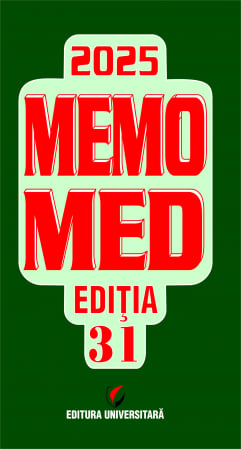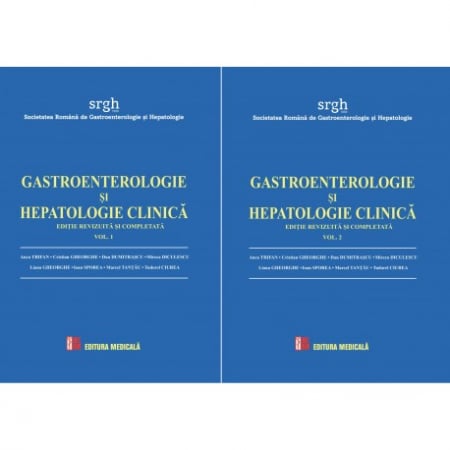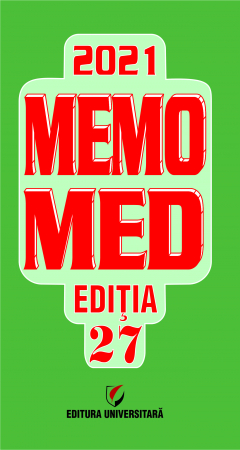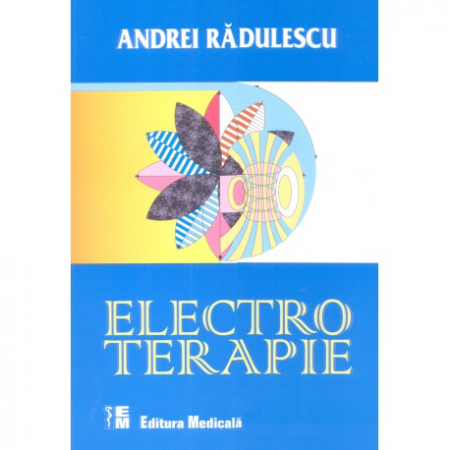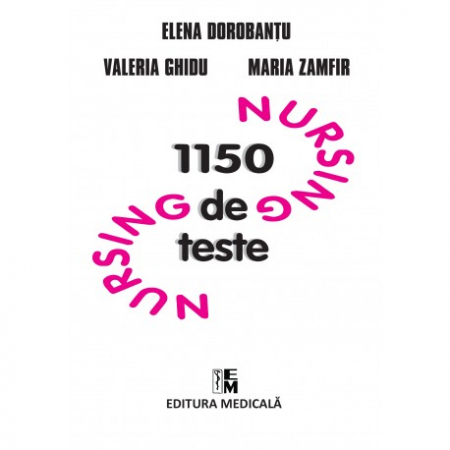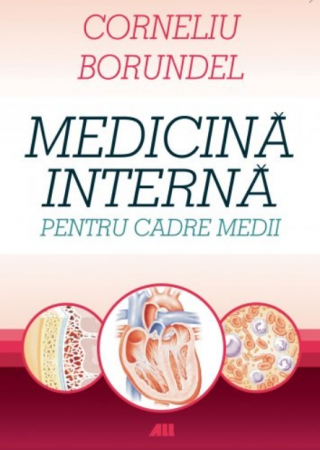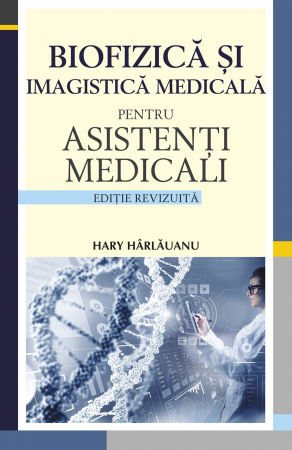ISBN: 978-606-28-0763-4
DOI: 10.5682/9786062807634
Publisher year: 2018
Edition: I
Pages: 194
Publisher: Editura Universitară
Author: Ioan Sorin Tudorache, Mihai Calin Tanasi, Andrei Denis Voichitoiu, Tudor Harsovescu
- Description
- Download (1)
- Authors
- Content
- More details
- Reviews (0)
The presentation of the material of this paper is didactic, easy to follow and remember, scientifically correct, being of real use in the anatomical training of students. This paper is useful both for students in the preclinical years and those in the final years for neurology, ENT, neurosurgery, ophthalmology, etc.
-
NEUROANATOMIE
Download
MIHAI CALIN TANASI
ANDREI DENIS VOICHITOIU
TUDOR HARSOVESCU
PREFACE / 9
LIST OF ABBREVIATIONS USED / 11
1. GENERALITIES. INTRODUCTION TO THE STUDY OF THE NERVOUS SYSTEM / 13
1.1. COMPONENTS OF THE NERVOUS SYSTEM / 13
1.2. HISTOLOGICAL STRUCTURE / 15
1.2.1. NEURONS / 16
1.2.2. NEVROGLIILE / 18
1.3. PERIPHERAL NERVE STRUCTURE / 20
1.4. SYNOPSIS / 24
1.5. NEUROTRANSMITTERS / 28
2. DEVELOPMENT OF THE CENTRAL AND PERIPHERAL NERVOUS SYSTEM / 32
2.1. DEVELOPMENT OF THE SPINAL CORD / 32
2.2. BRAIN DEVELOPMENT / 34
2.3. DEVELOPMENTAL ABNORMALITIES / 38
3. MADUVA SPINARII / 40
3.1. EXTERNAL CONFIGURATION / 40
3.2. STRUCTURE / 41
3.2.1. GRAY SUBSTANCE OF THE SPINAL CORD / 41
3.2.2. WHITE SUBSTANCE OF THE SPINAL CORD / 46
3.3. SPINAL NERVE / 50
3.3.1. MEDULLARY REFLEXES / 53
4. ASCENDING PATH / 55
4.1. RECEPTORS / 55
4.2. THE WOOD SYSTEM / 58
4.3. THE EXTRALEMNISCAL SYSTEM / 63
5. CEREBRAL TRUNK / 67
5.1. EXTERNAL CONFIGURATION / 67
5.1.1. ANTERO-LATERAL FATA / 67
5.1.2. REAR FACE / 69
5.1.3. FOURTH VENTRICLE / 71
5.2. STRUCTURE / 73
5.2.1. ASH SUBSTANCE OF THE CEREBRAL TRUNK / 73
5.2.2. WHITE SUBSTANCE OF THE CEREBRAL TRUNK / 84
6. THE CEREBEL / 101
6.1. EXTERNAL CONFIGURATION / 101
6.1.1. LOBATIA AND LOBULATION OF THE BRAIN / 102
6.2. STRUCTURE OF THE BRAIN / 104
6.3. BRAIN CONNECTIONS / 107
6.3.1. CEREBLE INJURIES / 108
7. DIENCEPHALUS / 110
7.1. EXTERNAL CONFIGURATION / 110
7.1.1. III VENTRICLE / 113
7.2. TALAMUSUL / 114
7.2.1. TALAMIC RADIATION / 116
7.3. HYPOTHALAMUS / 117
7.4. EPITALAMUS / 119
7.5. SUBTALAMUS / 120
8. CEREBRAL HEMISPHERE / 121
8.1. EXTERNAL CONFIGURATION / 124
8.1.1. EXTERNAL FACE OF THE CEREBRAL HEMISPHERE / 125
8.1.2. MEDIAL FACE OF THE CEREBRAL HEMISPHERE / 127
8.1.3. BASAL FACE OF THE CEREBRAL HEMISPHERE / 129
8.2. CEREBRAL CORTEX / 131
8.3. THE LANGUAGE SYSTEM / 136
9. DESCENDING PATH / 151
9.1. THE PYRAMID MOTOR SYSTEM / 151
9.2. EXTRAPYRAMIDAL MOTOR SYSTEM / 153
10. ANALYZERS / 157
10.1. VISUAL ANALYZER / 157
10.1.1. GENERALITIES / 157
10.1.2. EYEBALL / 158
10.1.3. VISUAL RECEPTORS / 170
10.1.4. OPTICAL PATH / 173
10.1.5. VISUAL AREAS / 176
10.1.6. EXTRAPYRAMID CIRCUITS AND VISUAL REFLEXES / 176
10.2. HEARING ANALYZER / 177
10.3. VESTIBULAR ANALYZER / 183
10.4. TASTING ANALYZER / 185
10.5. OLFACTORY ANALYZER / 186
11. MENINGES, CEREBROSPINAL FLUID, VASCULARIZATION OF THE CENTRAL NERVOUS SYSTEM / 188
11.1. MENINGELE / 188
11.2. CEREBROSPINAL FLUID / 189
11.3. VASCULARIZATION OF THE SPINAR BONE / 190
11.4. VASCULARIZATION OF THE BRAIN / 190
BIBLIOGRAPHY / 193
The neurosciences have as object of study the nervous system and have undergone with the passage of time and the improvement of technology an exponential development.
Neuroanatomy studies the morphological aspect of the nervous system, representing for many centuries a continuous concern of biologists, doctors, anatomists, histologists, etc. The nervous system is the most complex system known so far in the Universe and the in-depth decipherment of its structure and functions will open the way to knowledge of living organisms and especially humans.
The present paper presents in a coherent way, both the anatomical data of the nervous system, including its development, as well as recent acquisitions regarding some functioning mechanisms.
The presentation of the material of this paper is didactic, easy to follow and remember, scientifically correct, being of real use in the anatomical training of students. This paper is useful both for students in the preclinical years and those in the final years for neurology, ENT, neurosurgery, ophthalmology, etc.
The addition of simple sketches to the presented text and the detailed verification of the concordance with the international nomenclature of all the terms used, a balance between various chapters and small practical applications can make this manual one of the best works in our literature.
I congratulate the authors who, after a laborious work of information, after a long experience in teaching anatomy, managed to provide students with a very helpful work in the study of the nervous system.
Prof. univ. Dr. Ispas Alexandru
Department of Anatomy, UMF Carol Davila Bucharest
Director, Francisc I. Rainer Institute of Anthropology, Romanian Academy

6359.png)
![Neuroanatomy [1] Neuroanatomy [1]](https://gomagcdn.ro/domains/editurauniversitara.ro/files/product/large/neuroanatomie-275-75728.jpg)


